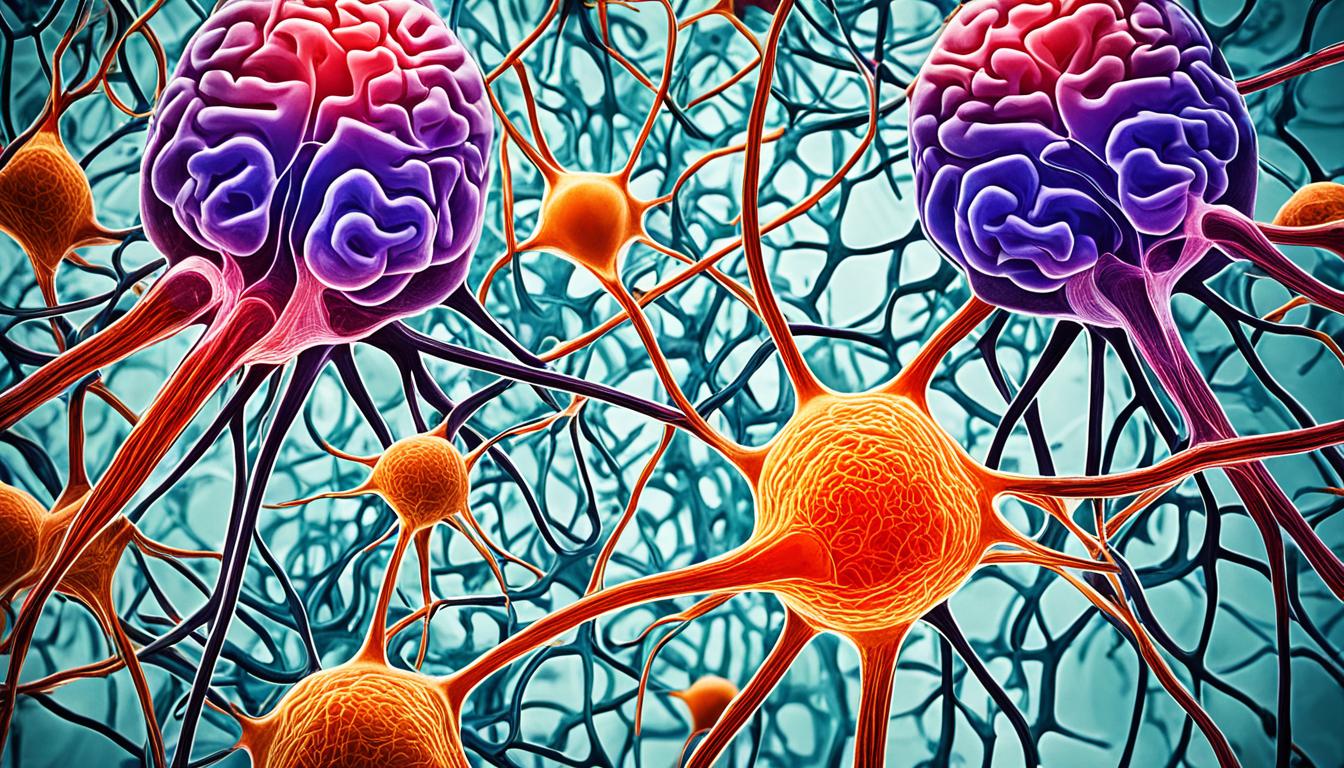Understanding Strokes: What Happens to the Brain?
A stroke occurs when the brain’s blood supply is interrupted or reduced, leading to damage to brain tissues. Two main types of strokes exist: ischemic strokes and hemorrhagic strokes.
Ischemic strokes are responsible for 87% of strokes and occur when blood clots obstruct the brain’s blood vessels. On the other hand, hemorrhagic strokes result from ruptured blood vessels, leading to bleeding in the brain.
During a stroke, the brain experiences a lack of oxygen and nutrients, resulting in various physical and cognitive effects. These effects include reduced motor function, impaired coordination, weakness or paralysis, speech difficulties, swallowing problems, and emotional changes.
The type and severity of the stroke, along with preexisting conditions and overall health, play a significant role in determining the extent of brain damage and the required recovery time.
| Stroke Type | Description |
|---|---|
| Ischemic stroke | Caused by blood clots obstructing brain blood vessels |
| Hemorrhagic stroke | Resulting from ruptured blood vessels and bleeding in the brain |
Factors Affecting Stroke Recovery Time
When it comes to stroke recovery, several factors can influence the time it takes to regain functionality and achieve optimal health. Understanding these factors can help individuals and their healthcare providers develop appropriate treatment plans and set realistic expectations. The severity of the stroke, treatment timing, preexisting conditions, and overall health all play significant roles in the recovery process.
1. Stroke Severity
Stroke severity refers to the extent of damage caused by the stroke. It can vary from mild to severe, with more severe strokes resulting in greater physical and cognitive impairments. The severity of the stroke affects the recovery timeline and the level of rehabilitation required to regain lost abilities.
2. Treatment Timing
Timely medical intervention is crucial for stroke recovery. Prompt treatment can help minimize brain damage and improve outcomes. Ischemic strokes, which are caused by blood clots, can be treated with clot-busting medications or surgical procedures. Hemorrhagic strokes, caused by blood vessel ruptures, may require surgery to repair the affected blood vessels. The quicker the treatment is initiated, the better the chances of a successful recovery.
3. Preexisting Conditions
Existing health conditions can complicate the recovery process. Individuals with preexisting conditions such as heart disease, diabetes, or high blood pressure may experience more challenges when recovering from a stroke. These conditions can impact the effectiveness of treatment and overall health status, potentially prolonging the recovery time.
4. Overall Health
An individual’s overall health plays a significant role in stroke recovery. Good physical and mental health, along with a healthy lifestyle, can contribute to a faster and more successful recovery. Having a strong immune system and optimal organ function can enhance the body’s ability to heal and adapt. Conversely, poor overall health may slow down the recovery process and require additional support and interventions.
By considering stroke severity, treatment timing, preexisting conditions, and overall health, healthcare providers can develop individualized treatment plans to optimize stroke recovery. Early intervention, proactive management of preexisting conditions, and the adoption of a healthy lifestyle can all contribute to a smoother and more efficient recovery process.
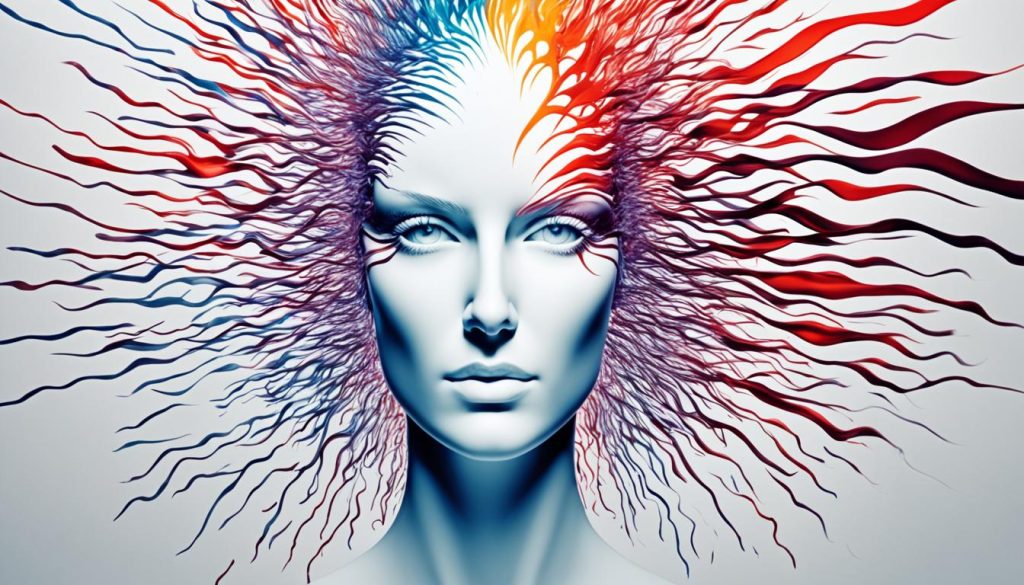
Factors Affecting Stroke Recovery Time
| Factors | Impact on Recovery Time |
|---|---|
| Stroke Severity | More severe strokes often require longer recovery periods and extensive rehabilitation. |
| Treatment Timing | Timely treatment increases the chances of a successful recovery and shorter rehabilitation duration. |
| Preexisting Conditions | Underlying health conditions may complicate the recovery process, potentially lengthening the overall recovery time. |
| Overall Health | Good overall health supports faster recovery, while poor health can slow down the rehabilitation process. |
The Importance of Early Treatment and Rehabilitation
Quick response and early treatment are vital in stroke recovery. When stroke symptoms are recognized early, immediate medical attention can be obtained by calling 9-1-1, significantly increasing the chances of receiving life-saving stroke care. Timely treatment starts once a stroke is diagnosed, and the interventions may include clot-busting medication or surgery, depending on the type of stroke. However, the journey to recovery doesn’t stop there.
Rehabilitation plays a crucial role in the process of regaining physical and cognitive abilities after a stroke. It typically starts within days of the stroke and involves a multi-disciplinary approach tailored to each individual’s needs. By engaging in early rehabilitation, patients can begin therapy and develop compensatory strategies, ultimately improving their functional outcomes and overall quality of life.
Early stroke treatment offers numerous benefits, such as reducing the extent of brain damage and preventing secondary complications. It helps to minimize the impact of stroke-related impairments and maximizes the chances of regaining independence. Rehabilitative interventions are designed to address specific challenges, targeting areas such as mobility, coordination, speech, and cognition.
One of the key aims of early stroke treatment and rehabilitation is to promote neuroplasticity, which is the brain’s ability to reorganize and form new neural connections. Through targeted therapy, individuals can harness this innate capacity for recovery and enhance their functional abilities. This emphasizes the importance of seeking immediate medical attention and starting rehabilitation as early as possible.
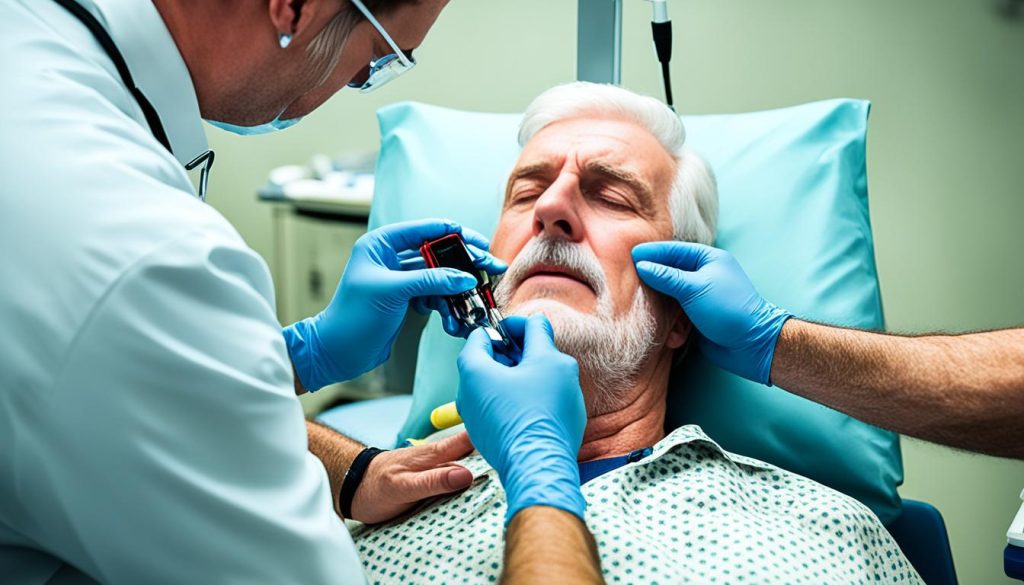
Benefits of Early Treatment and Rehabilitation
- Minimizes brain damage and secondary complications
- Reduces the impact of stroke-related impairments
- Maximizes the chances of regaining independence
- Promotes neuroplasticity and brain reorganization
- Enhances functional abilities and quality of life
By prioritizing early treatment and rehabilitation, stroke survivors can optimize their chances for a successful recovery. The combination of prompt medical intervention and targeted therapies offered by rehabilitation specialists sets the foundation for an individual’s rehabilitation journey, allowing them to regain control over their lives and achieve the best possible outcomes.
| Aspect | Early Treatment and Rehabilitation | Delayed Treatment and Rehabilitation |
|---|---|---|
| Brain Damage | Minimized | Potentially increased |
| Functional Recovery | Promoted | Delayed |
| Complications | Reduced | Potentially increased |
| Independence | Maximized | May be compromised |
| Quality of Life | Improved | May be severely impacted |
Types of Rehabilitation for Stroke Patients
Stroke rehabilitation encompasses a variety of therapies tailored to address different aspects of recovery. These therapies aim to restore and enhance functional abilities, independence, and overall quality of life for stroke survivors.
1. Physical Therapy
Physical therapy plays a crucial role in stroke rehabilitation. It focuses on improving motor skills, mobility, and restoring strength and coordination. Physical therapists develop personalized exercise programs that target specific areas affected by the stroke, helping patients regain movement and balance.
2. Occupational Therapy
Occupational therapy assists stroke survivors in relearning daily activities essential for independent living. Occupational therapists work with patients to improve skills necessary for tasks like eating, dressing, bathing, and managing household activities. They employ adaptive techniques, assistive devices, and environmental modifications to maximize a patient’s functional capabilities.
3. Speech Therapy
Speech therapy serves a vital role in helping stroke patients overcome speech and swallowing difficulties. Speech therapists assess and treat communication impairments, such as difficulty speaking, understanding language, or expressing thoughts. They also address issues related to swallowing, ensuring patients can safely consume food and liquids without complications.
4. Cognitive and Emotional Activities
Rehabilitation for stroke patients may include cognitive and emotional activities to address mental health challenges. These activities aim to enhance cognitive function, memory, problem-solving abilities, and emotional well-being. Rehabilitation psychologists and therapists employ various techniques to address cognitive impairments and emotional changes resulting from the stroke.
Stroke rehabilitation can take place in different settings, depending on the patient’s needs and severity of the stroke. Inpatient rehabilitation programs provide comprehensive care within a hospital setting, while outpatient therapy offers scheduled sessions at a rehabilitation center. Home-based care is also available for patients who require therapy within the comfort of their own homes.
The choice of rehabilitation method is determined through collaboration between healthcare providers, patients, and their families. It takes into consideration the specific needs and goals of the individual, ensuring a comprehensive and personalized approach to recovery.
| Rehabilitation Method | Description |
|---|---|
| Physical Therapy | Focuses on improving motor skills, mobility, strength, and coordination. |
| Occupational Therapy | Helps in relearning daily activities for independent living. |
| Speech Therapy | Addresses speech and swallowing difficulties. |
| Cognitive and Emotional Activities | Includes activities to enhance cognitive function and emotional well-being. |
How Long Does It Take to Recover From a Stroke? Short-term vs Long-term Effects
Stroke recovery is a gradual process that unfolds over time, with the first three months playing a crucial role in determining the extent of improvement. During this period, the brain may undergo spontaneous recovery as it adapts and develops new ways to perform tasks. It is important to understand the short-term effects typically experienced by stroke survivors during the recovery journey.
Short-term effects encompass a range of physical and cognitive challenges. These may include reduced motor function, coordination difficulties, speech impairment, and emotional changes. Each individual may experience these effects to varying degrees based on the severity of the stroke. It is important to note that short-term effects can significantly impact the daily life and quality of life of stroke survivors.
While some patients may achieve full recovery within the first year, others may continue to experience long-term effects known as chronic stroke disease. These effects can manifest as lasting disabilities and impairments, such as persistent motor deficits, speech difficulties, and cognitive deficits. The severity of the stroke, the timing of treatment, and the type of rehabilitation received play important roles in determining the long-term effects.
It is essential for stroke survivors and their families to be aware of and prepared for both the short-term and long-term effects of stroke. Understanding the recovery timeline and potential challenges can help in setting realistic expectations and planning for ongoing care and support. Regular follow-up visits with healthcare providers, continued rehabilitation, and lifestyle adjustments can contribute to improved outcomes and a better quality of life.
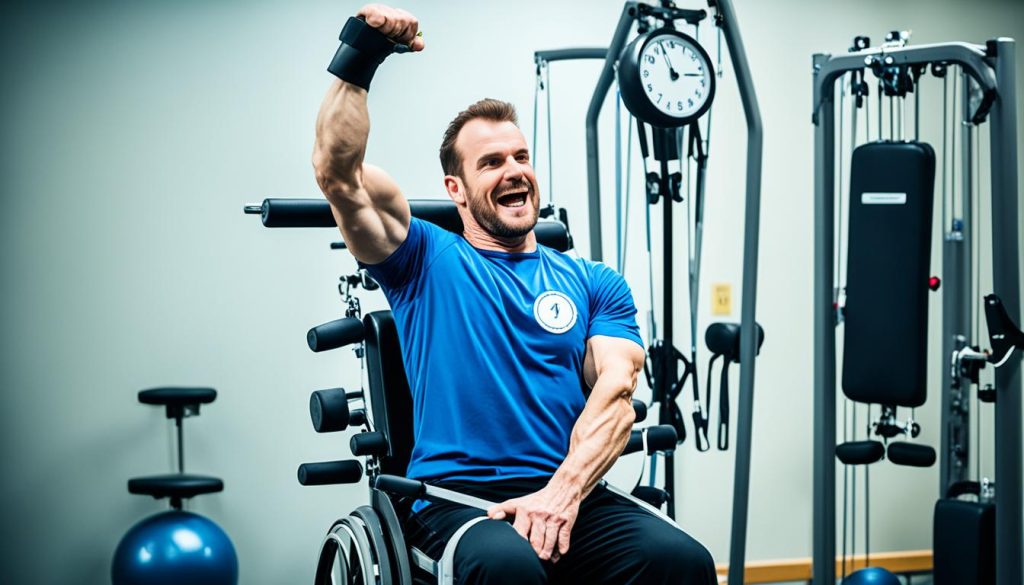
| Timeline | Effects |
|---|---|
| Short-term | Reduced motor function Coordination difficulties Speech impairment Emotional changes |
| Long-term | Chronic stroke disease Persistent motor deficits Speech difficulties Cognitive deficits |
Coping with Life After a Stroke
Life after a stroke requires ongoing care and support. It is essential for patients to continue following up with healthcare providers, including primary care physicians and specialists like neurologists and physiatrists. These medical professionals can monitor the patient’s progress, address any concerns, and provide guidance on post-stroke management.
Rehabilitation psychologists can play a crucial role in helping stroke survivors cope with cognitive and emotional challenges. They provide specialized therapy and support to address the mental and psychological impact of a stroke. These professionals help individuals navigate the emotional roller coaster and develop strategies to adapt to their new reality.
Support groups also play a significant role in the life of a stroke survivor. They offer a valuable network of individuals who have experienced similar challenges. These groups provide a safe space to share experiences, exchange tips for coping, and offer emotional support. Connecting with others who understand the complexities of life after a stroke can be incredibly empowering and comforting.
Preventing future strokes is equally important in post-stroke care. Managing underlying causes such as heart disease, high blood pressure, and diabetes is crucial to minimize the risk of recurrent strokes. In consultation with healthcare providers, stroke survivors may need to make lifestyle changes, incorporate medications into their routine, and, in some cases, undergo surgical interventions.
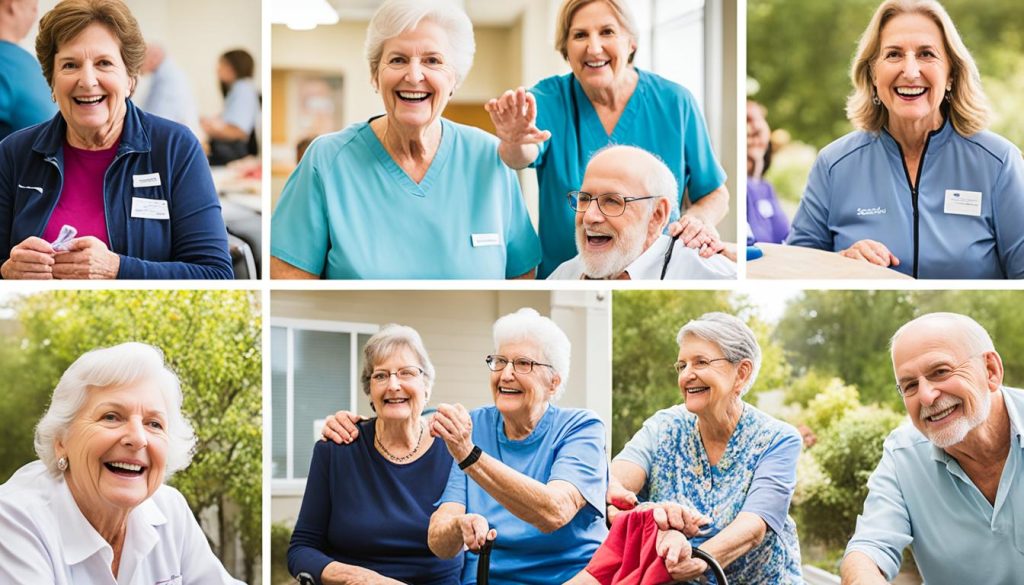
With the right support and ongoing care, stroke survivors can make significant progress in regaining independence and improving their quality of life. Personalized rehabilitation programs, support networks, and regular medical check-ups can help navigate the challenges and embrace the possibilities that lie ahead.
Conclusion
Stroke recovery is a unique journey for each individual, influenced by factors such as stroke severity, treatment timing, and overall health. Early intervention and dedicated rehabilitation play a crucial role in improving outcomes and restoring functionality. While the initial three months are critical for recovery, progress can continue for up to a year and beyond.
Different rehabilitation methods, including physical therapy, occupational therapy, and speech therapy, address specific challenges that stroke survivors may face. These therapies help patients regain lost abilities and overcome physical and cognitive impairments. However, stroke recovery is not limited to physical rehabilitation alone. It requires ongoing care, support from healthcare providers, and lifestyle changes to prevent future strokes and maintain overall well-being.
With proper support and dedication, stroke survivors can achieve significant improvements in their recovery journey. Although recovery expectations may vary, it is important to approach the process with patience and a positive mindset. By working closely with healthcare professionals, adhering to rehabilitation programs, and making necessary lifestyle adjustments, stroke survivors can maximize their potential for recovery and lead fulfilling lives.

